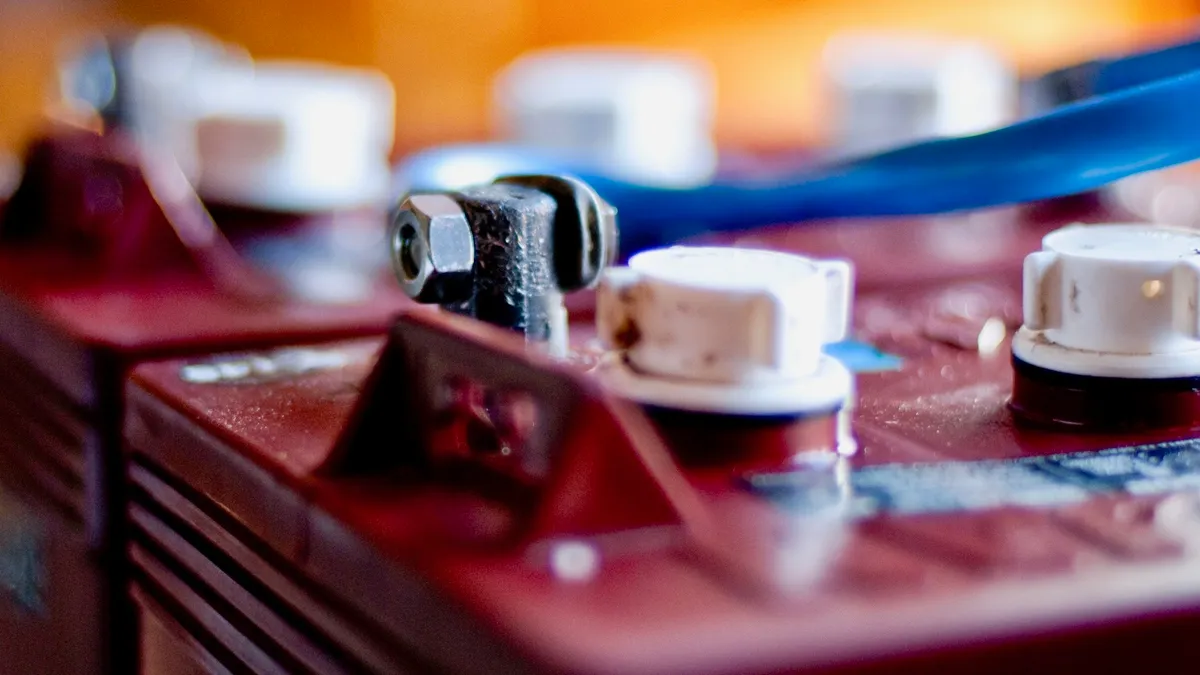Dive Brief:
- The Consortium for Battery Innovation is requesting bids for research projects from universities, companies and other institutions into ways to increase the efficiency of lead batteries to make them a more economic storage technology that can back up renewable energy and provide demand response.
- The consortium of scientists and lead battery developers also sees the technology as a good fit for the residential consumer market for battery storage, due to its high safety value and ability to be easily recycled.
- Lithium-ion batteries have been far more popular for energy storage than any other battery technology, but the consortium’s push for new research aims to make lead, or lead-acid, batteries cheaper by increasing their cycle life — the number of times a battery can be charged and discharged — from 1,000 to 5,000, compared to around 2,500 to 4,000 for lithium-ion batteries, Consortium for Battery Innovation Manager Matthew Raiford told Utility Dive.
Dive Insight:
Lead-acid batteries are already a multi-billion-dollar industry and are widely-used in automotive and industrial applications. But for the power sector, they are a small player relative to lithium-ion batteries, which make up over 90% of the global grid battery storage market. One reason for their fast growth is cost — lithium-ion batteries have an estimated project cost of $469 per kWh, compared to $549 per kWh for lead-acid, according to the U.S. Department of Energy’s 2019 Energy Storage Technology and Cost Characterization Report.
But at $260 per kWh, lead batteries themselves already have lower capital costs than lithium-ion, which is at $271 per kWh, the DOE report found. If further research can get lead batteries to hit the goal of an average of 5,000 cycles over their lives by 2022, then the technology could be able to reach the DOE’s target of operational costs of 3 cents per cycle per kWh, Raiford said, a milestone that no battery chemistry has consistently reached.
The requests for proposals from the consortium are aimed at finding advancements that will increase a lead battery’s service life by allowing it to charge and discharge more times throughout its lifespan without degrading its efficiency significantly. Some of the research topics the consortium is seeking work on include studies of the degradation of lead batteries when used for demand response and renewable energy arbitrage.
If the cost issue can be tackled, then other features of lead batteries may make them more appealing in some markets. The electrolyte used is water-based, so the batteries have very little risk of catching fire. “They can take a bullet and still operate safely,” Raiford said, which is why the military commonly uses lead batteries.
The safety feature could be a selling point in places like California and Germany where there is growing demand for residential battery storage systems, Raiford said.
Another advantage is that lead batteries are mostly lead, a common material, and thus do not run into the difficulties of obtaining lithium from China and elsewhere, that has concerned the battery storage industry. In addition, while China is a major producer of lithium-ion batteries, there is a $27 billion industry manufacturing lead batteries in the U.S., “while the footprint of lithium-ion is not even close to that,” according to Raiford.
The request for proposals "correctly" targets lifespan as one hurdle that lead batteries must overcome in order to be competitive, Wood Mackenzie head of energy storage Daniel Finn-Foley told Utility Dive. But a second major hurdle is high maintenance costs, he said. In part due to these costs, lead battery operators try to stay at full and not partial charge, which limits the battery's ability to provide services in an increasingly renewable-heavy grid.
"As battery owners and operators increasingly rely on a storage system’s flexibility, the ability to operate at partial state of charge, say to absorb intermittent solar or provide ancillary services intermittently, will be critical," Finn-Foley said.













